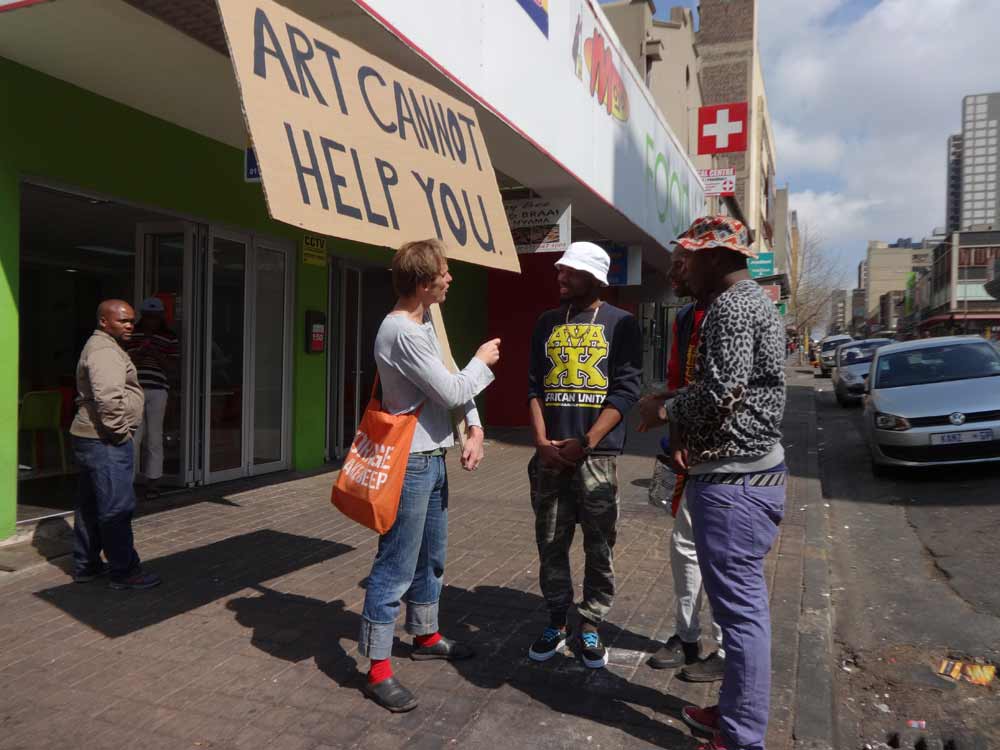Guest Blog by Anthony Schrag
www.anthonyschrag.com
Over the past few decades, there has been a growing interest in participatory processes. There is now a “necessity of ‘civil society’ participation in decision-making processes” (Saurugger, 2010). The realm of culture has not escaped this “participatory turn” (Bishop, 2012). ‘Socially Engaged Practices’ occupy a central place within the sector. Major cultural expressions in the form of exhibitions, projects, festivals etc. become mechanisms designed to integrate the cultural sector into different domains such as education, social work, health and so on. Problematically, this work often involves the expectation that the outcome will be ‘transformative’, where ‘transformative’ is often assumed to mean ‘making better’, without first having analysed who is defining this ‘better’ and on what terms?
This problem with the notion of ‘transformation’ is an ethical one. What are the real goals of artists (and arts organisations)? What objectives inform their relationship with the participants involved in their projects? What does the term mean for them? Participants have their own goals, politics and desires. They are not inert materials which can be shaped and moulded like clay or paint. Sophie Hope’s brilliant PhD Participating In The Wrong Way (2012) brings this problem into relief by highlighting the fact that funded participation projects often focus on communities which are elderly, socio-economically deprived, non-white, women, or criminal. What does it mean to try and make these constituent communities ‘better’? And what are the underlying assumptions about these people’s identities and their role in the world?
Hope’s work highlights the way in which assumptions such those described above are often reductive when defined as ‘democratic’. Hers is one of a litany of voices that challenge the instrumentalisation of artistic practice; her study The Cultural Policy Collective (2004) claimed that transformational programmes were indicative of a “growing crisis of democratic legitimation and social justice”. More recently, Hewitt (2011) argued that artists were being positioned as “service providers” to a welfare state that was to-all-intents-and-purposes a “distortion of the public sphere”, while Vickery (2007) stated that such work was being utilised to “construct civic identities” amenable to a state.
The critique of commentaries such as these has become more rather than less relevant, even if Covid 19 has put its potency provisionally on hold. While responsibility for distorting the function of artistic practice is based squarely on the shoulders of governments and cultural institutions, artists themselves are not innocent of bending policy to their own ends, if only to secure their own material survival.
I would not want this blog to become a polemic for socially engaged practices to be more ‘political’ and driven by the missionary zeal of building a leftist utopia: no, this too would be an equally problematic form of instrumentalisation, one which would leave little space for complicated narratives and the pluralistic nature of the public domain.
I call this my “Grandmother Problem”. My Grandmother (all 4 foot 9 of her; hair permed like the Queen) would have thrown herself in front of a bus if she knew that it would mean I would be safe. She was also a staunch conservative, and deeply capitalist. Most art activists would have written her off as ‘wrong-headed’, rather than someone who just had a different idea of how to make the world ‘better’. Socially engaged practice shouldn’t play politics by trying to create an alternative exclusionary utopia.
Instead, I call on practitioners in this field to reflect on the intentions and functions of ‘participatory work’ and to consider the answer given by artist Anne-Marie Copstake when asked “Whom do you work with?”. She answered: “I work with people who are not me”. Her response reveals the radical dimension of participatory practices: to meet and interact with those who hold different political concepts, who speak to different priorities and have other ideas of how to make the world ‘better’. To participate with such people is not to eradicate their beliefs and replace them with our own: rather it means to explore how we exist together.
This is not about creating consensus: rather it is about ensuring dissensus. As Rosalind Deutsche (1996) argues: “Conflict, division, and instability […] do not ruin the democratic public sphere; they are conditions of its existence”. The work of socially engaged practices, therefore, is to advocate for the democratic sphere by ensuring a multiplicity of perspectives: including – and especially – those different from our own, and not to use the practice to transform others according to our own image. To ‘transform’ after all, can also mean ‘to make worse’.




